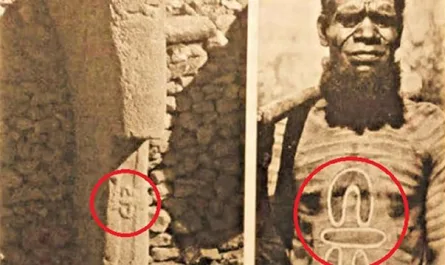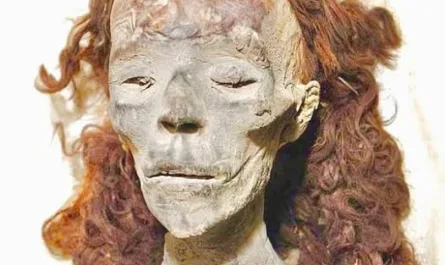The Jadeite Cabbage with Insects, a stunning work of art from China’s Qing Dynasty, is a piece of jadeite meticulously carved to resemble a head of bok choy, complete with a locust and katydid camouflaged among its leaves. Crafted in the late 19th century and presented as a gift to Consort Jin, concubine of Emperor Guangxu, in 1889, this exquisite sculpture is now a star attraction at the National Palace Museum in Taipei, Taiwan. Its delicate craftsmanship and symbolic richness make it a cultural treasure, blending natural beauty with profound meaning.
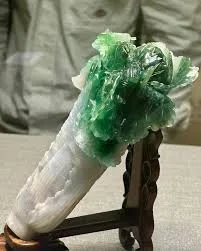
A Marvel of Craftsmanship
Carved from a single piece of jadeite—a prized gemstone valued for its vibrant green and white hues—the Jadeite Cabbage stands about 18.7 cm tall, 9.1 cm wide, and 5.07 cm thick. The artist, whose identity remains unknown, transformed the stone’s natural coloration into a lifelike bok choy, with translucent green leaves and a creamy white stalk. Hidden within the foliage are a locust and a katydid, their intricate details showcasing the carver’s skill in capturing nature’s minutiae. The sculpture likely originated from the Qing court’s imperial workshops in Beijing, where artisans honed techniques to exploit jade’s natural patterns.
The piece’s realism is breathtaking: the leaves curl and overlap as if swaying in a breeze, while the insects’ delicate legs and wings blend seamlessly into the jade’s veins. Created using hand tools like bamboo drills and abrasive pastes, the work reflects the Qing era’s peak of jade craftsmanship, rivaling the grandeur of artifacts like the Lamassu or the precision of Newgrange’s stonework.
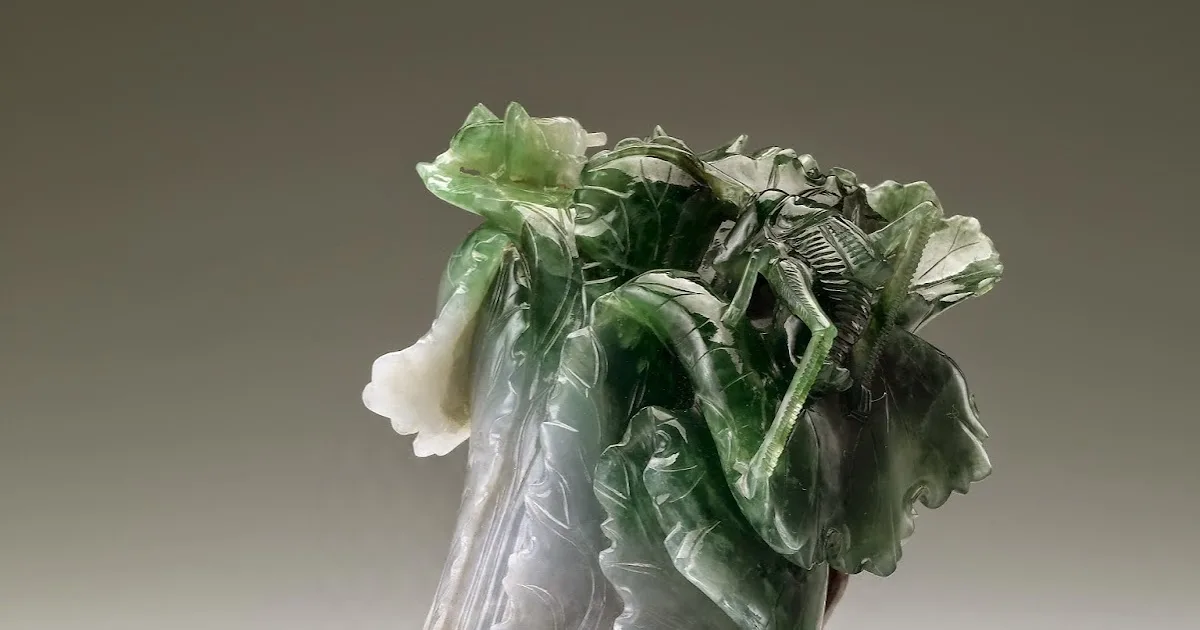
Symbolic and Historical Significance
Presented to Consort Jin, a favored concubine of Emperor Guangxu (r. 1875–1908), the Jadeite Cabbage was likely a dowry gift for her entry into the Forbidden City or a token for her residence in the Zhongcui Palace. In Chinese culture, the cabbage symbolizes wealth and prosperity, its layered leaves evoking abundance. The locust and katydid, often associated with fertility and numerous offspring, added a wish for many children—a potent message for a consort. This symbolism aligns with Qing imperial values, where art conveyed status and auspicious blessings.
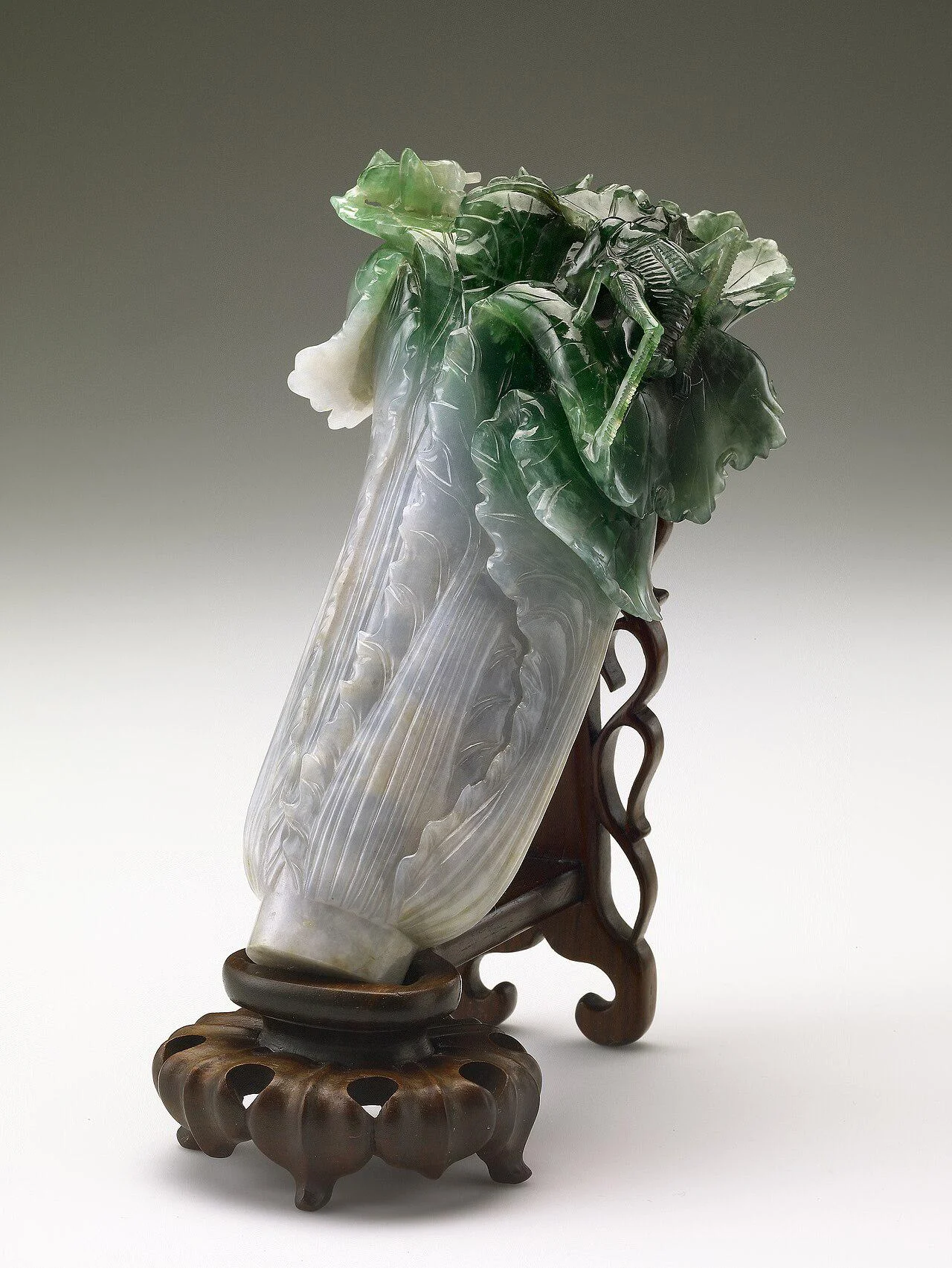
The sculpture’s journey reflects China’s turbulent history. After the Qing Dynasty’s fall in 1911, it remained in the Forbidden City until the 1930s, when it was moved to Nanjing to protect it from Japanese invasion. In 1949, it was shipped to Taiwan with the Nationalist government’s retreat, joining the National Palace Museum’s collection. Today, it’s one of the museum’s “Three Treasures,” alongside the Meat-Shaped Stone and Mao Gong Ding, drawing millions of visitors annually.
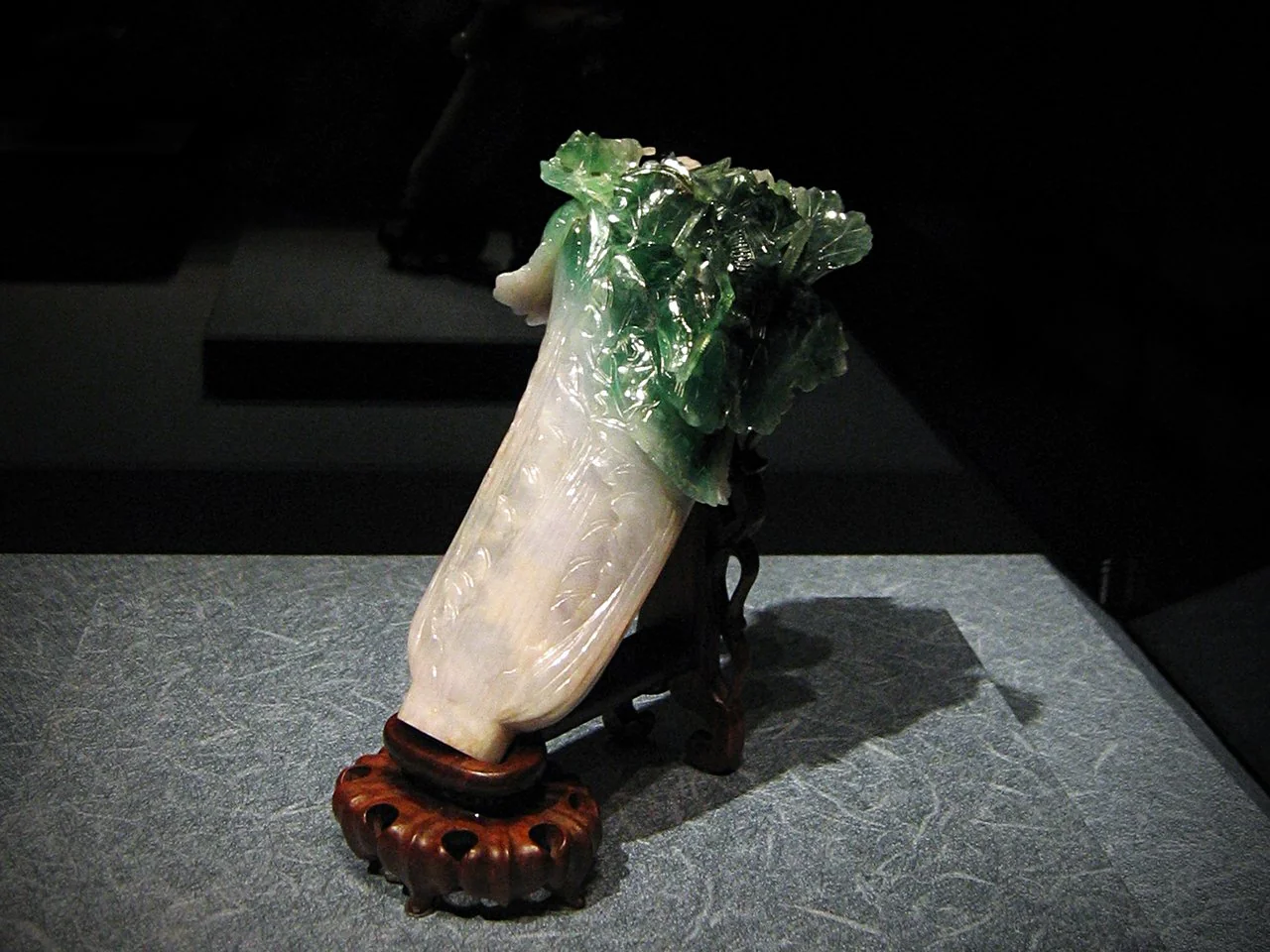
Cultural Resonance and Modern Appeal
Housed in the National Palace Museum in Taipei, the Jadeite Cabbage captivates with its delicate beauty and cultural depth. Its display, often rotated to preserve the jade, attracts crowds who marvel at its lifelike details and historical significance. The piece has inspired replicas, jewelry, and even emojis, cementing its status as a cultural icon. Its popularity surged in the 2000s, partly due to its whimsical charm and social media buzz, with over 1 million annual visitors to the museum in recent years.
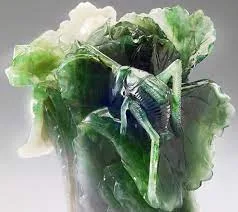
The sculpture’s blend of artistry and symbolism parallels other ingenious creations, like the Dahomey Amazons’ cornrow maps or the five-legged Lamassu, where form serves deeper purpose. Its preservation in Taipei, despite political upheaval, mirrors efforts to protect sites like Hadrian’s Villa or HIMI’s ecosystems.
Lessons for Today
The Jadeite Cabbage offers timeless lessons:
Artistic Ingenuity: Its transformation of raw jade into a lifelike vegetable inspires creative problem-solving, encouraging modern artisans to blend form and meaning.
Cultural Continuity: Like Irfan Habib’s historical scholarship, the cabbage preserves tradition, urging us to value and protect heritage amid change.
Symbolic Power: Its fertility and prosperity motifs remind us to embed meaning in creations, fostering hope and connection in art and community.
A Verdant Treasure
The Jadeite Cabbage with Insects, carved for a Qing consort in 1889, is a masterpiece of artistry and symbolism, its green leaves and hidden creatures whispering of wealth and fertility. Now a jewel of Taipei’s National Palace Museum, it bridges ancient craftsmanship with modern admiration, much like Baltermants’ frost-napping babies or the Tasmanian tiger’s rock art. This tiny bok choy, alive with meaning, invites us to marvel at human skill and the enduring stories etched in stone.


